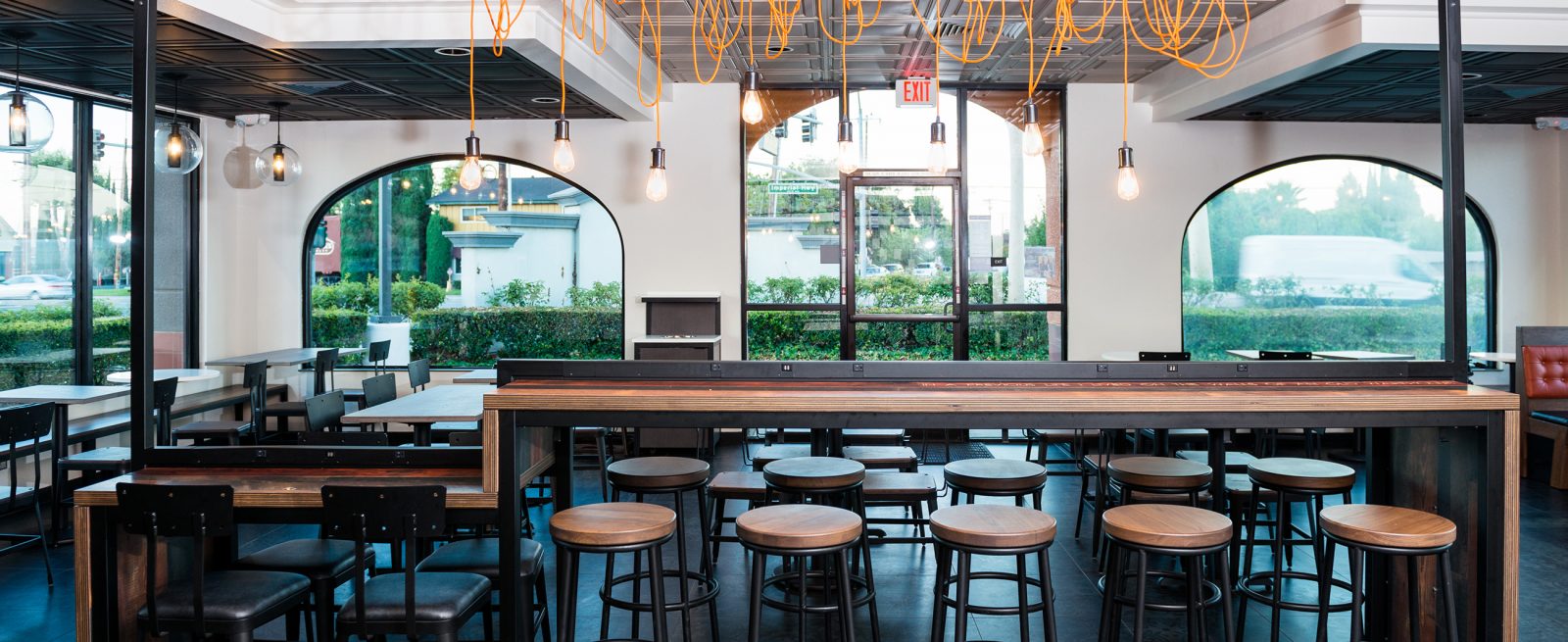Ceilings Can Define Style
5 Min Read By Steven H. Miller
When designer Monica Jeffers saw the aging, dated restaurant she was going to remodel, she thought, “A T-bar grid ceiling! How the heck am I going to deliver this beautiful, elegant restaurant with a T-bar ceiling?” Ironically, this thought sets her apart. All too often, designers pay little if any attention to the ceiling.
Jeffers understood the design value of the expansive surface overhead. Driven by necessity, she searched beyond the usual mineral fiber acoustic panels and discovered a little-known world of ceiling options that can fit a standard 2’X2’ or 2’x4’ grid, and add architectural style, dimensionality, texture, color, and even light. Using thermoformed acoustic ceiling panels, divided into sections by beams, Jeffers created a coffered look that raised the apparent ceiling height and provided precisely the background of Old-World charm she was seeking for the elegant Italian Kitchen in Vancouver, B.C. And since the panels are non-water absorbent and…
Sorry, You've Reached Your Article Limit.
Register for free with our site to get unlimited articles.
Already registered? Sign in!


